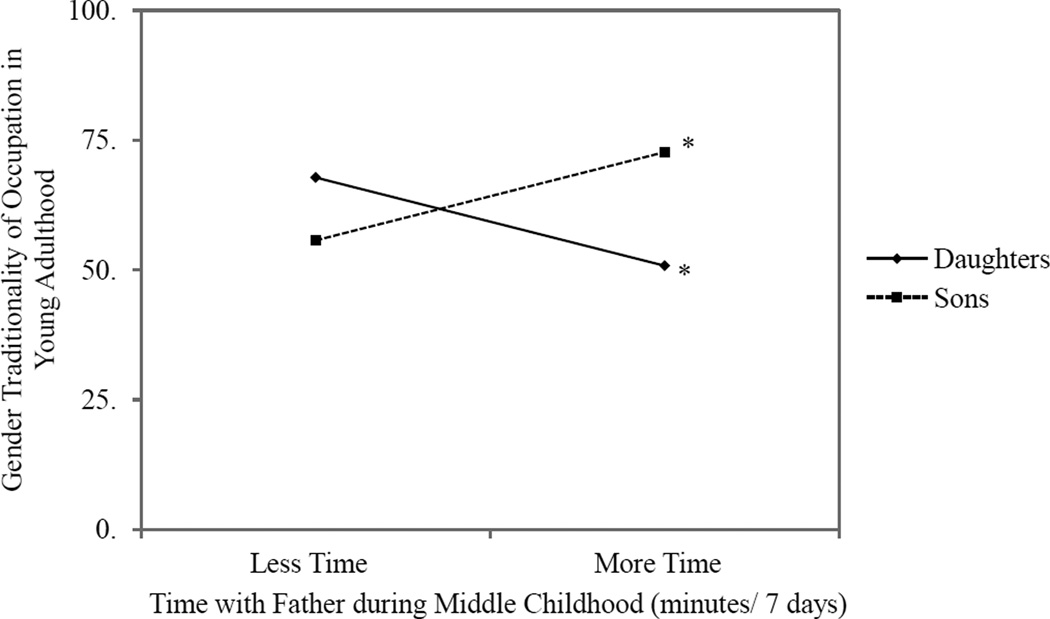Figure 2.
More time with fathers in middle childhood predicts daughters’ attaining less and sons’ attaining more gender-typed occupations in young adulthood
Note. Less and more time with father defined as one standard deviation above and below the mean, respectively. Simple slopes obtained using multi-level modeling while controlling for all covariates are significantly different from zero, p < .05 level. Gender typicality was coded as the percent of women in an occupation, but young men’s scores were reverse-coded so that higher scores reflected more gender-typed occupations for both young men and women.

